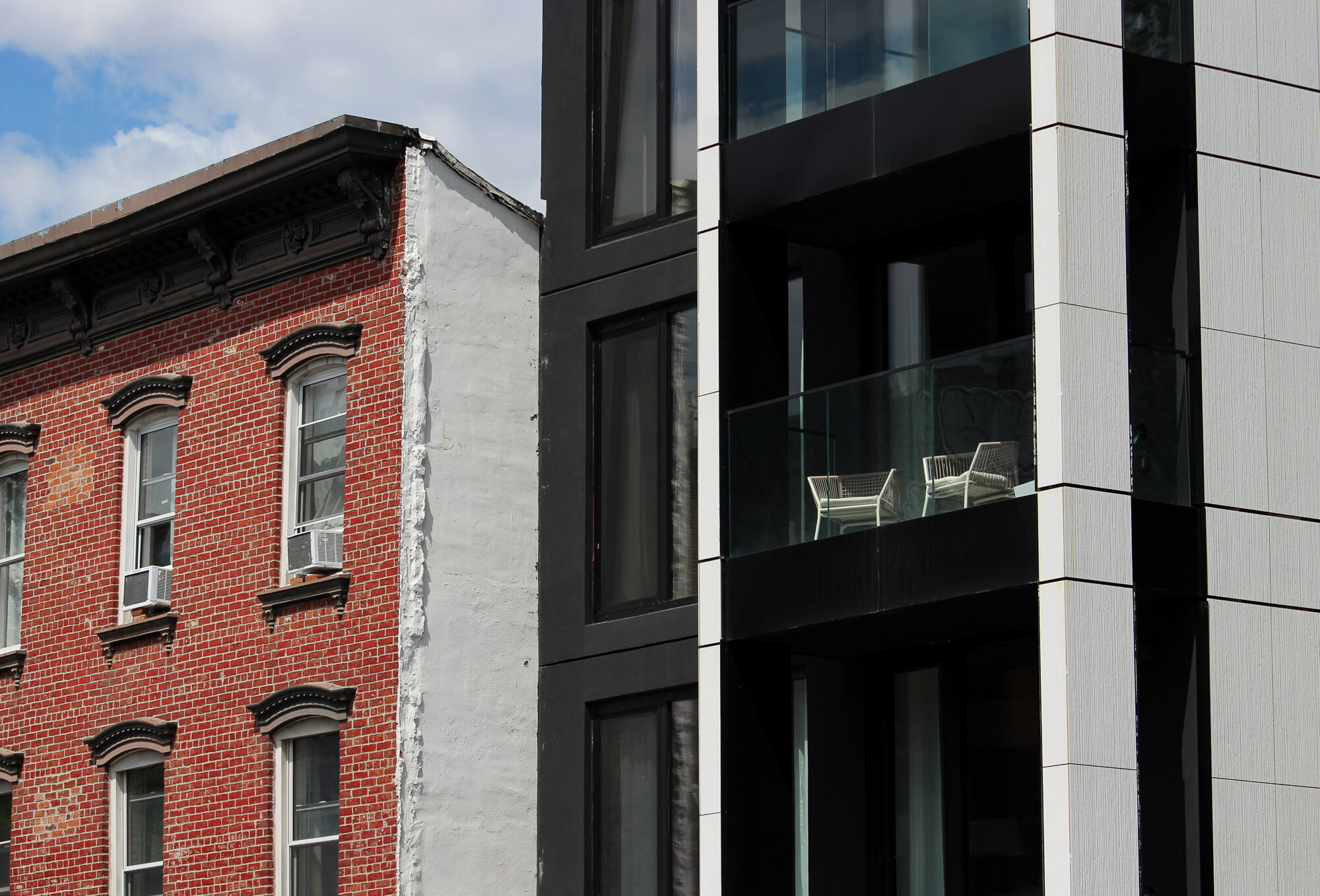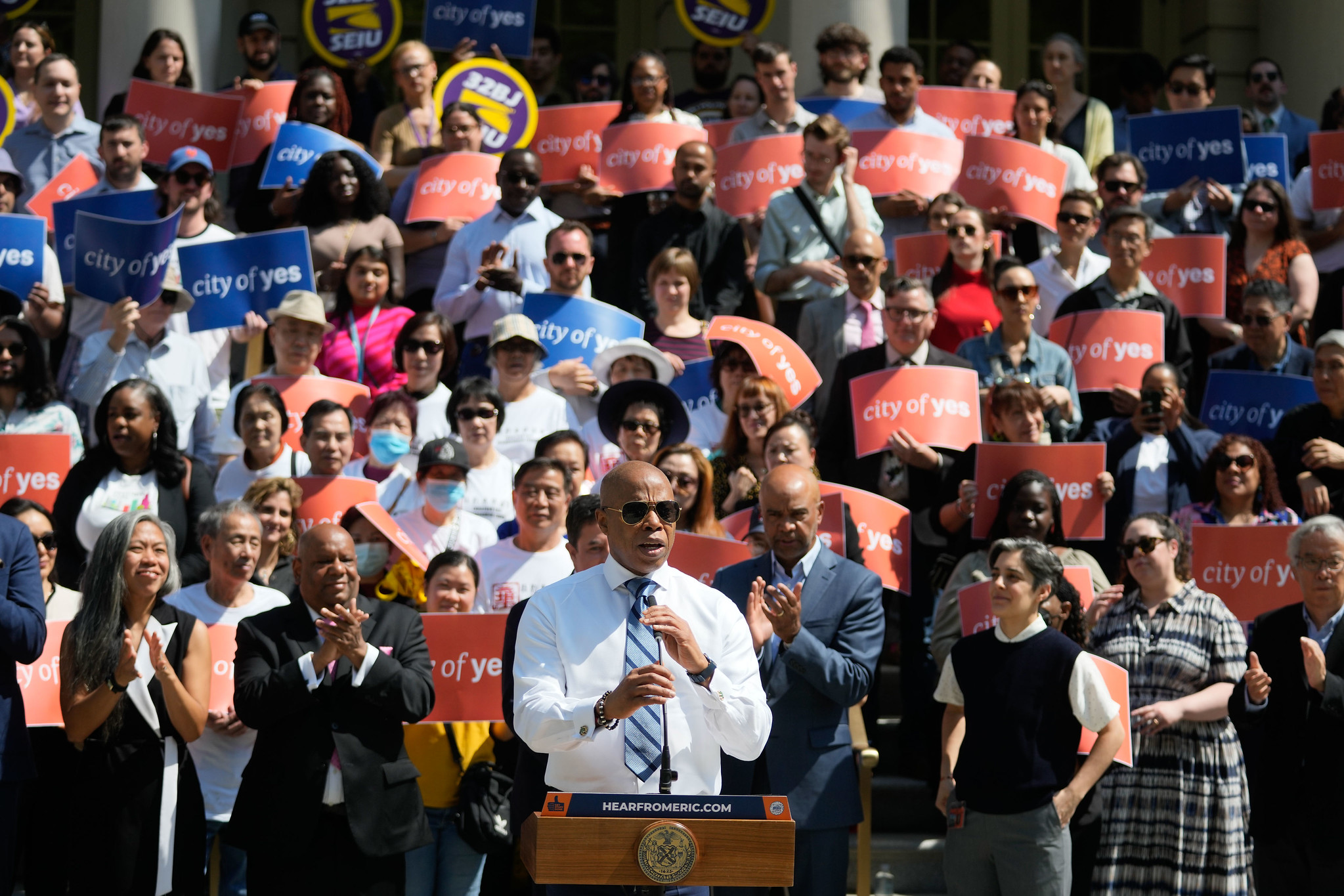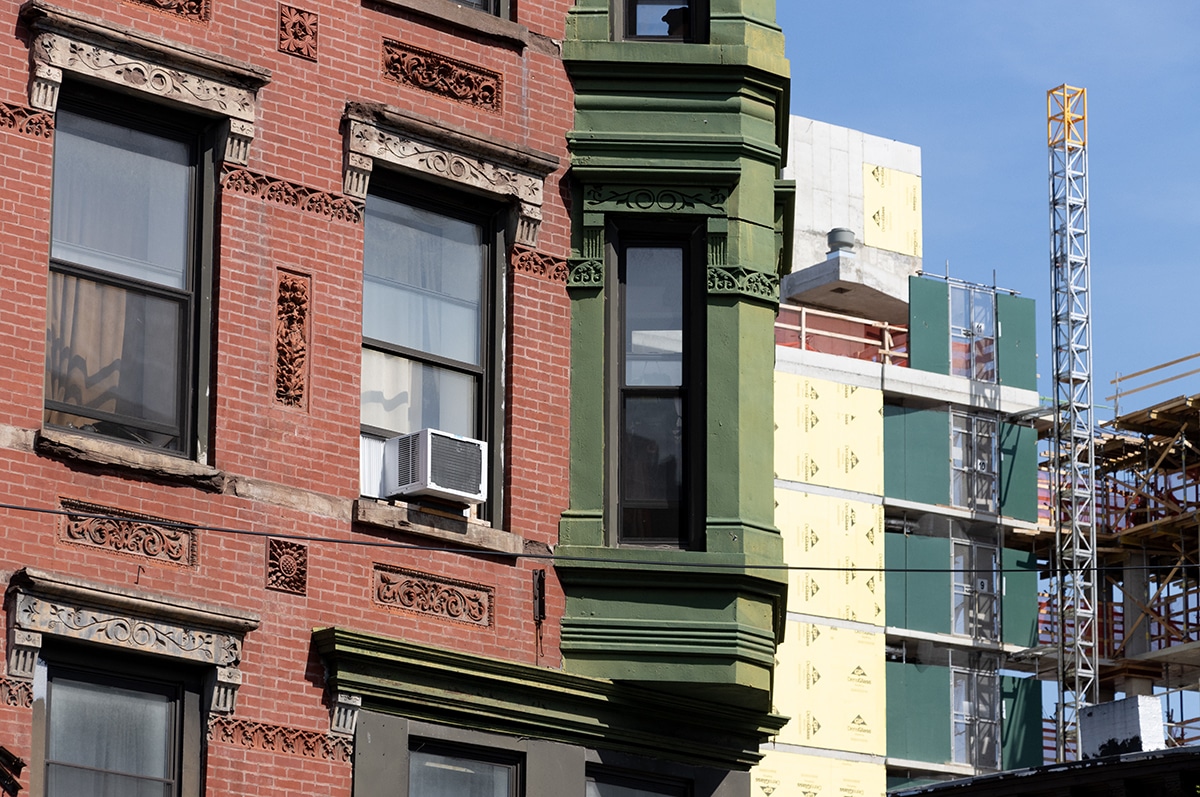Brooklynites React to Amended ‘City of Yes’ Housing Proposal
Mayor Eric Adams’ “City of Yes” housing plan took a big step forward last week — with some significant changes.

Photo by Susan De Vries
By Anna Bradley-Smith & Kirstyn Brendlen, Brooklyn Paper
Mayor Eric Adams’ “City of Yes” housing plan took a big step forward last week — with some significant changes.
The plan is meant to overhaul old zoning regulations and make it easier for all kinds of housing to be built all over New York City — increasing housing stock and hopefully easing the ongoing housing crisis.

On November 21, after a day of contentious negotiations, which delayed votes in two City Council committees for hours, a deal was struck: the mayor agreed to adjust rules for parking minimums in some districts, limited new “accessory dwelling units,” and pared back development districts in Queens and the Bronx.
‘City of Yes’ gets a yes
The adjusted City of Yes proposal passed the council’s Subcommittee on Zoning and Franchises 4-3, with “no” votes from council members representing less-dense neighborhoods on Staten Island and in eastern Queens; and was approved by the Committee on Land Use 8-2, with one abstention.
Just one Brooklyn representative, Council Member Crystal Hudson — who voted in favor of City of Yes — sits on the Land Use committee, despite the fact that Brooklyn is the city’s most populous borough.
Undeterred by the changes, Adams celebrated the day as a victory.
“Thanks to our shared commitment in building critically-needed housing, we have reached an agreement on a historic plan that could open the doors to a little more housing in every neighborhood in our city — with no borough, block, or backyard left behind,” he said in a statement. “If passed, New York City will, once again, serve as a model to the nation on government’s infinite ability to take challenges head-on, set forth a bold agenda, and get the job done. To my partners in the City Council, let’s say ‘yes’ to City of Yes.”

Now headed to the City Planning Commission before a final vote by the full City Council on December 5, the proposal is expected to create 80,000 new housing units – less than the roughly 109,000 the original plan would have created.
The full impact the amended plan will have on Brooklyn is unclear, but critics said it represents a raw deal for the borough.
In a statement, Brooklyn Borough President Antonio Reynoso said the amended proposal doesn’t do enough to upzone low-density neighborhoods, which are typically wealthier and full of single-family homes.
As a result, he said, those nabes will remain “exclusive” and segregated and pressure will increase in other areas — including higher-density neighborhoods in Brooklyn.
“City of Yes was never going to fix everything. It was never an affordability strategy, it was never a production plan, and it was never a panacea for our city’s housing crisis,” Reynoso said. “But it was at least a modest opportunity to begin addressing the discriminatory zoning practices that force low-income, Black and Brown neighborhoods to do all of the work of building new housing while low-density neighborhoods get away with contributing nothing.”
Meanwhile, Alicia Boyd, who is behind the group Movement to Protect the People, said City of Yes “will undo over a 100 years of zoning that has been put in place to protect the community” and will negatively impact the working and middle classes.
Boyd said the assertion that City of Yes would undo negative impacts of previous zoning in communities of color was false, and that Black and brown communities, many zoned R6, likely to see the largest increase in housing due to R6 having no height limits. She said many Black and brown residents who had lived in their neighborhoods for many years are now at risk of displacement since developers could raze older, smaller homes and replace them with much taller buildings, and criticized the plan’s optional affordability requirements.
“Thus, not only will we lose even more affordable housing, increase the homeless population, but we will destroy the existing neighborhoods to do it,” she said.

Kelly Carroll, the executive director of the Atlantic Avenue BID, said City of Yes for Housing Opportunity was unlikely to change much around the Atlantic Avenue corridor in Downtown Brooklyn and Boerum Hill, since much of the area consists of historic districts.
Across the board, Carroll, who is also a board member at the Historic Districts Council and City Club of New York, and an adjunct professor at NYU, said City of Yes for Housing Opportunity didn’t go far enough in addressing the city’s affordability crisis. She said affordable units in new developments should be mandated, not optional.
“If you’re going to be saying affordable housing is a goal, allowing private developers to opt in as a choice falls terribly short, it should be mandatory,” she said.
City of Yes for Housing Opportunity includes a “Universal Affordability Preference” clause, which would allow developers to build more housing if the additional units were made “affordable” to a certain point. The council set that affordability threshold to 60% of the Area Median Income, or $83,880 annually for a family of three, which will make opting in even less desirable for developers, Carroll said.
“Supply and demand only works in a free market and New York City is not a free market,” she said. “We have many types of regulated housing in the mix, such as Mitchell Lama, such as NYCHA, such as rent control, rent stabilization, and so just adding supply doesn’t work in this formula.”
In Brooklyn, median rental prices have risen 3.2% year-over-year, according to a recent Douglas-Elliman report, with median rent hovering around $4,000 per month. Two-bedroom apartments were leasing for an average of $4,212 — a rate considered “affordable” for a family of three earning roughly 130% AMI, or $181,740 annually.
Some see opportunity, despite setbacks
Fifth Avenue Committee executive director Michelle de la Uz said the group was fully supportive of the zoning reform, and in particular said the Universal Affordability Preference, lifting parking mandates, and enabling the creation of accessory dwelling units in some areas “will ensure that communities throughout the city are able to contribute to solving our housing crisis.”
“Importantly, the City Council has secured a commitment of $5 billion from the city and the state to invest in infrastructure and affordable housing as part of implementing the City of Yes for Housing Opportunity,” she added. “Our housing crisis can be solved with a combination of political will and significant investment, and these are critical steps forward toward that goal.”

Meanwhile, Ofer Cohen, co-founder of new Brooklyn-based housing development company Ailanthus said City of Yes was “the most comprehensive citywide zoning reform in over 50 years, even despite the last-minute compromises, City of Yes is a critical step toward addressing New York City’s housing crisis, which has had a profound impact on Brooklyn and the entire city.”
Ofer, who was formerly the board chair of the Downtown Brooklyn Partnership and is on the board of the Brooklyn Navy Yard and the Brooklyn Chamber of Commerce, launched Ailanthus earlier this year in partnership with Tucker Reed and Vivian Liao, who are also behind Brooklyn development firm Totem.
Cohen said Ailanthus, supported by City of Yes reforms, wants to increase New Yorkers’ access to affordable housing by creating 10,000 housing units over the next five years.
“We are deeply encouraged by the City Council’s approval of this forward-thinking initiative, which sets clear guidelines to create a more equitable future for all,” he said.
Editor’s note: A version of this story originally ran in Brooklyn Paper. Click here to see the original story.
Related Stories
- Altered ‘City of Yes’ Housing Plan Passes Two Key City Council Committees
- City Council Releases a Housing Plan in Response to ‘City of Yes’
- Adams’ ‘City of Yes’ Spurs Clash on How to Get Needed Affordable Housing
Email tips@brownstoner.com with further comments, questions or tips. Follow Brownstoner on X and Instagram, and like us on Facebook.









What's Your Take? Leave a Comment